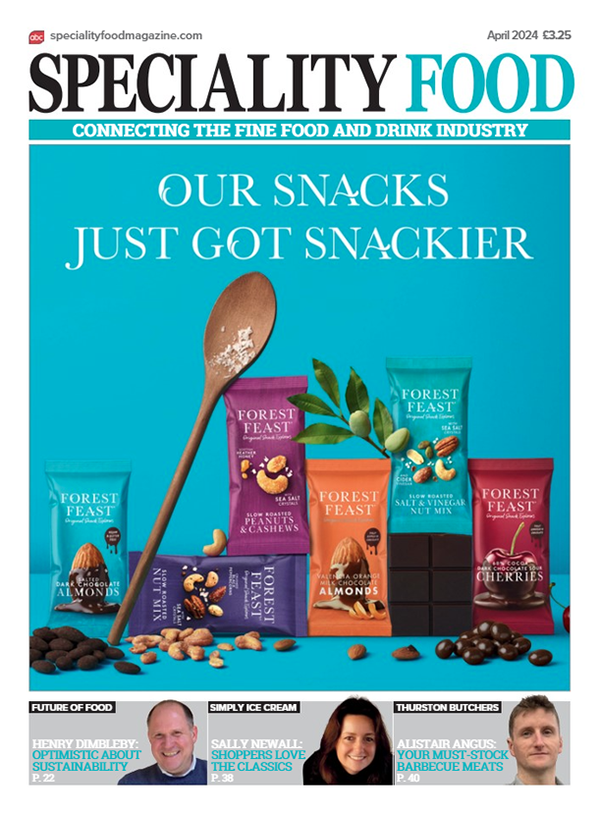“It was the best of times, it was the worst of times”

Literary lovers will know this is the opening lines of The Tale of Two Cities, from that Charles Dickens classic, set in revolutionary times
Cheese is having its own revolution of kinds, some of it almost imperceptible, with a whole range of shifting positions whose outcomes are hard to predict. The usual rollercoaster of milk price and availability goes on unabated, as it has these past 23 years since the demise of the Milk Marketing Board and its balancing influence for milk producer, cheesemaker and consumer, another victim of our wise EEC masters.
Now I believe we see milk reaching its heights as we close 2017, and possibly on a downward trajectory in the second quarter of 2018, normal weather conditions permitting.
That’s just the day to day reality of the dairy trade, which now operates in two streams, really. The big, the well-equipped and fully engineered who, with a few specialist exceptions, seek to streamline and create volume efficiency, and tick box the burgeoning technical web with its various adds-ons. They meet the varied needs of individual customers, export markets, and a litany of best practice bolt-ons, that now see one day audits stretched to four days, and all that despite a revolving door of separate unannounced visits and substantial expense to someone.
The slow lane of makers, the real artisan backbone of British heritage, find themselves frequently disenfranchised from access to that sector, often despite sweet words from the commercial world, albeit frequently sincere from those at the highest echelons who see it as a form of corporate social responsibility that also earns the recognition of supporting local makers.
Those chosen to deliver it, however, often lack depth of knowledge and passion for food, and in turn are under pressure on other commercial metrics to deliver volume, profitability and no waste – frankly, staying mainstream is often more comfortable.
Ironically, those with strong positions of difference now seem to give it up, whilst those with less history in this specialist sector, such as the discount sector, seem enthusiastic to take this up, recognising the opportunity. They sometimes show a preference to dip in and out on high days and holidays, and maybe miss the long term commitment necessary in this market.
The larger scale makers will become less in number over the coming years, and more consolidation is bound to be on the menu in the next five years, whereas the independent maker will have some interesting decisions to make. Investment in this sector will take bold thinking and a different approach to catch the mood.
The independent retail market will continue to be as vibrant as it is now I feel sure, providing as it does the right mood for the discerning customer who seeks provenance, speciality and local. However, we should prepare for some limited addition to that aspirational premium food sector ranks, as the recent years have seen a squeeze on incomes and, illogical as it is, food is the usual whipping boy whilst mobile phones, TV and a raft of other lifestyle essentials escape limitation in people’s minds.
Foodservice will see its own challenges in serving cheese, as the availability of staff, minimum and living wage demands, the cost accuracy of portioning, waste reduction, cost and margin pressures will all stress this last in line meal contribution, and that at a time when it had shown fashionable growth.
No article is complete without Brexit being woven in, and this too challenges thinking, even if it’s nearly 18 months away at the earliest. Whatever side of the argument the consumer sits on this divisive issue, it’s likely that British-made cheese will get some dividend, especially when the insults fly from wounded EEC politicians, and indeed there are some remarkably good replicas of classic Continental cheese types now firmly established in a number of innovative family makers.
If driven to World Trade rules, we could see tariffs of 40-47% on the import and export of cheese, and this will be payable on entry into the UK, challenging the cash flow of many in the trade.
Exchange rate is also well known, and published, with Sterling slumping from €1.30+ to a recent low of €1.07, a considerable 25% change already. Of course it provides a potential boost for exports.
The golden quarter of the last three months of the year comes around with predictable opportunity, and the coming nine-12 weeks will be vital to so many in the trade as the real earning moment – all wonder if the shopper will show the same confidence and resilience of the last few Christmas times that have beaten predictions for many. There is so much gloom being talked by the media that we are all in danger of being dragged into that mood. Experience has usually shown the shopper kicks off the mood to have a great Christmas, lets hope it’s the same again.
That being the case, the wise men might already plan for the dark months of January and February, when money becomes tighter, waistlines are stretched, and simplicity and value rule. Value and vigorous promotion might keep the tills clicking in this time.
This is a mere canter through the realities of the current cheese market complexity. I personally have supreme faith in our ability as a trade to manage challenge, and ultimately find a route to success, but it’s as much for others as for me to decide whether it’s the best or worst of times.





